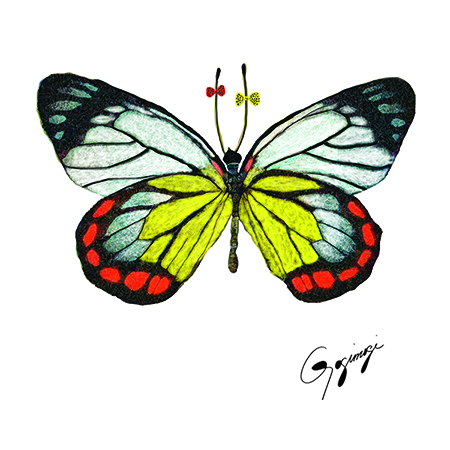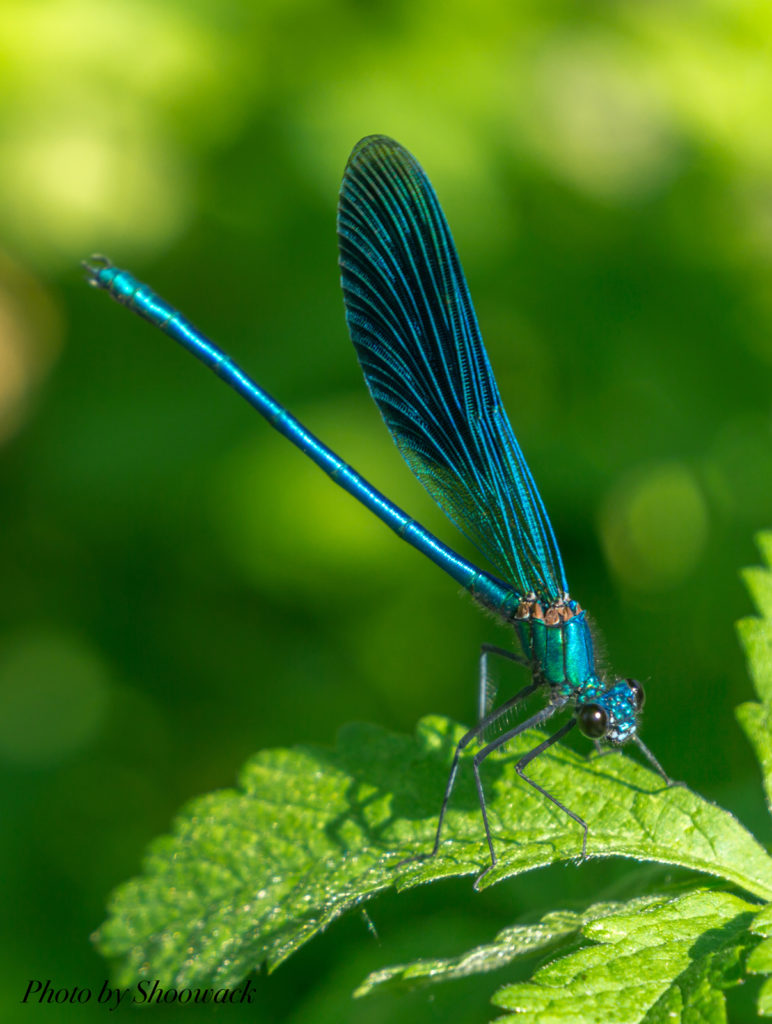
Here at Gogimogi Designs we draw most of our inspiration from nature. We are infatuated with both flora and fauna and are humbled by their unlimited beauty and complexity.
Some of our favorite creatures are arthropods (arachnids like spiders and scorpions, and insects). You may cringe at the idea of a bug crawling on your mattress or down you arm, but our Gogimogi geekiness goes full throttle when we encounter a funky-looking insect and get a chance to examine it up close (after a high-pitched scream, of course).
Arthropods are by far the largest phylum of animals on Earth. As of 2015 there are about one million known species of them, and estimates of their yet-to-be-discovered species take that number up to between 5 to 30 million!
That’s why it’s pretty much impossible to create a “top ten most beautiful insects” list, especially since so many of them are unknown to us. Also, “beautiful” is inherently a subjective term so what we consider gorgeous may indeed be frightening or cringeworthy to you. However, an attempt must be made, so here is our attempt at identifying 10 of the most gorgeous insects we’ve learned about (so far). We certainly reserve the right to alter, add or follow up with more lists, so keep an eye out!
This list is in no specific order. All of these guys are awesomely amazing.
The Spiny Flower Mantis
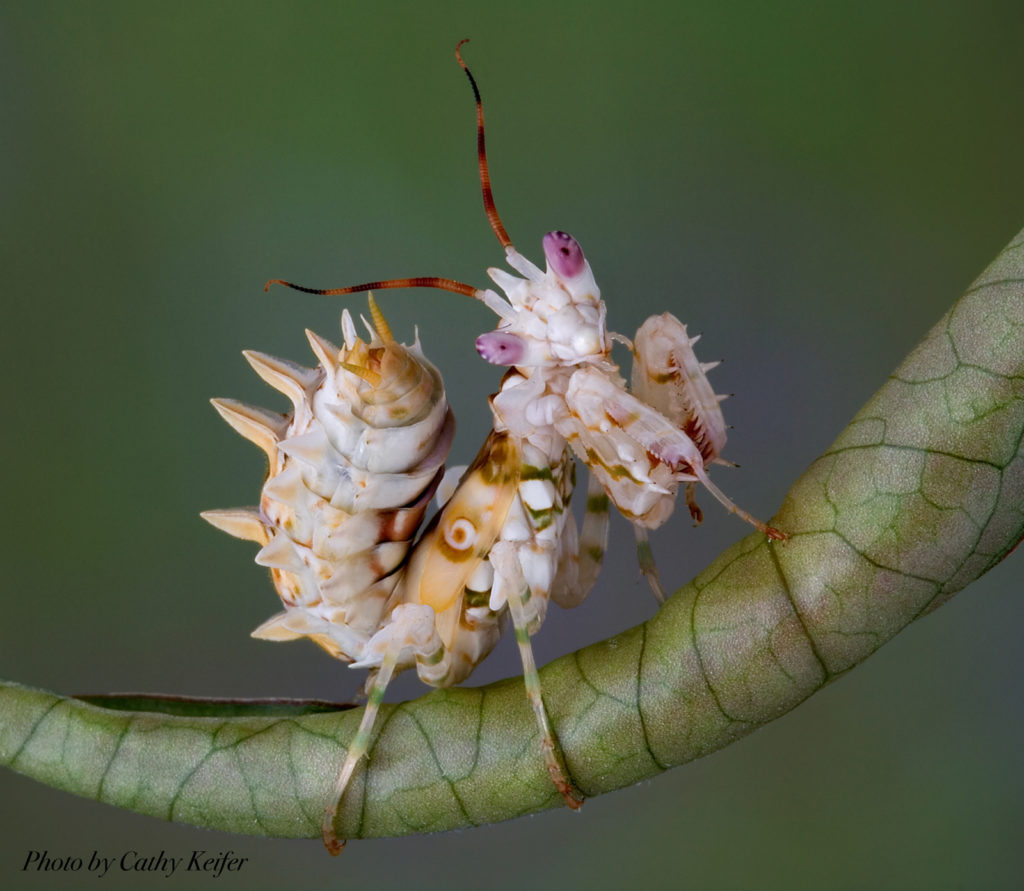
Imagine you’re already a member of one of the coolest insect orders out there: The Mantodea or Mantises. Now imagine that within that order you’re a member of the family that resembles flowers! That’s what you have in the Spiny Flower Mantis. A deadly, gorgeous insect that measures between 1 to 2 inches long and is native to Sub-Saharan Africa. When first born, these mantises look like little black ants, but as they molt, they gradually become lighter and lighter. The nymphs are white with orange and green stripes with an upturned abdomen.
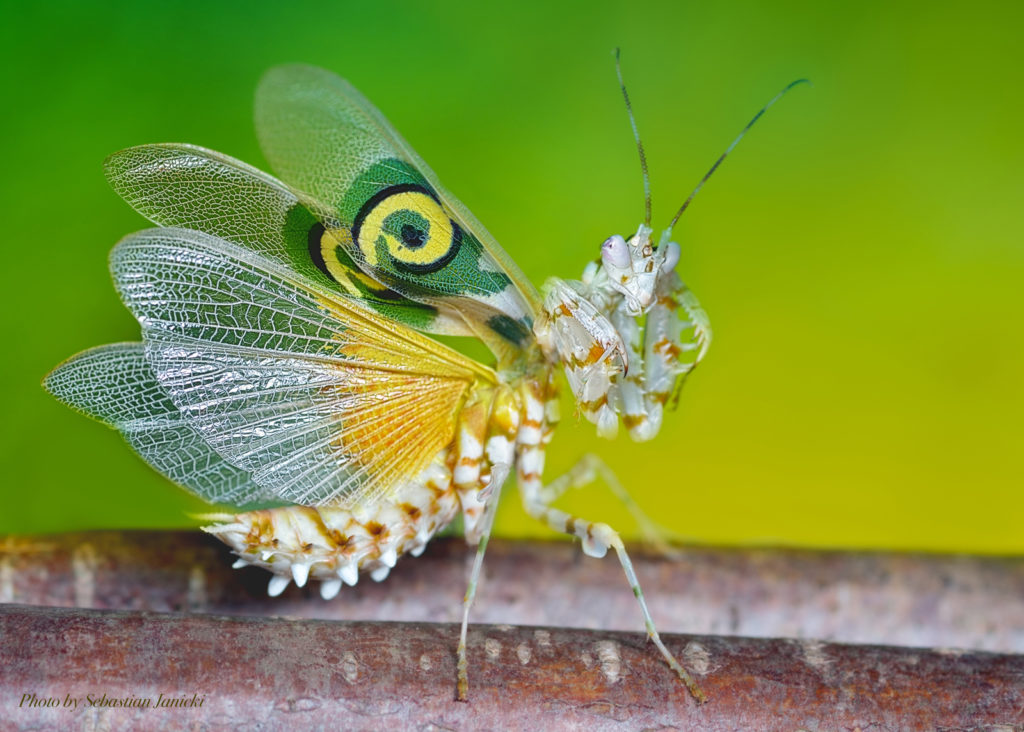
As adults, they have stunning, colorful markings on their wings that resemble eyes which they gladly use to scare off anyone who threatens them. Like other mantises, the Spiny Flower Mantis is cannibalistic. Females often consume the male after mating to help nourish their offspring.
The Golden Tortoise Beetle

There is a reason why these beetles have earned the nickname “goldbug.” They resemble something out of your grandmother’s jewelry chest. These guys measure between 5 to 7 mm (0.196 to 0.275 inches) and are native to the Americas. They are often metallic and range in color from reddish-brown to bright gold. They also change colors during mating and when feeling threatened. The edges of their wing casings expand and are nearly transparent.
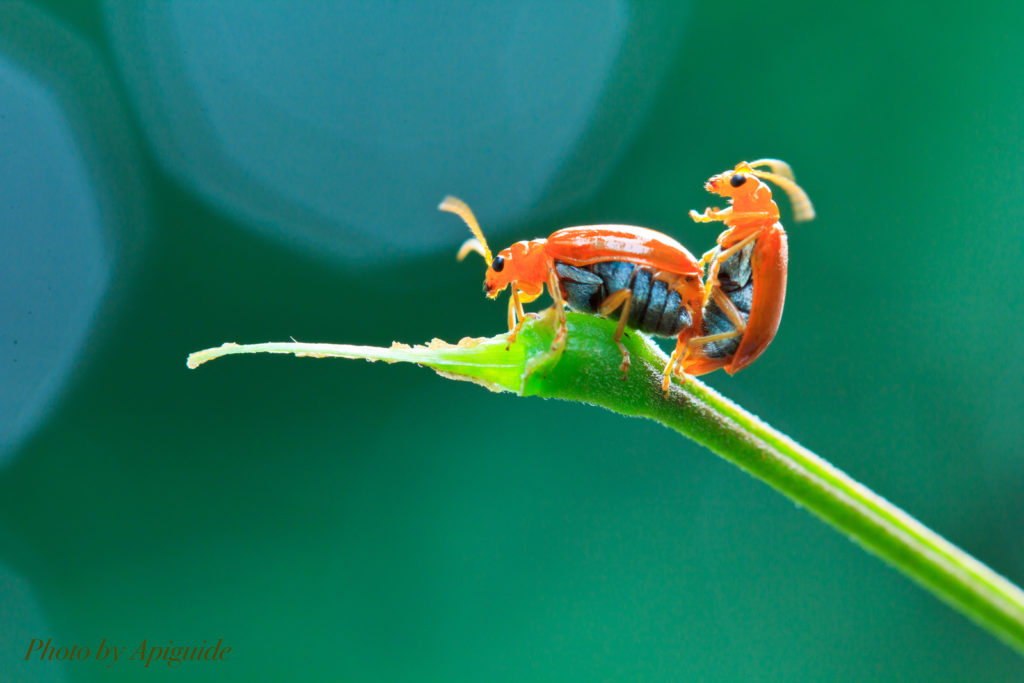
In 1979 a Georgetown University professor (Edward M. Barrows) conducted a study of the Golden Tortoise Beetle and found that their copulation could last anywhere between 15 to 583 minutes! That’s almost 10 hours!
The Glasswinged Butterfly
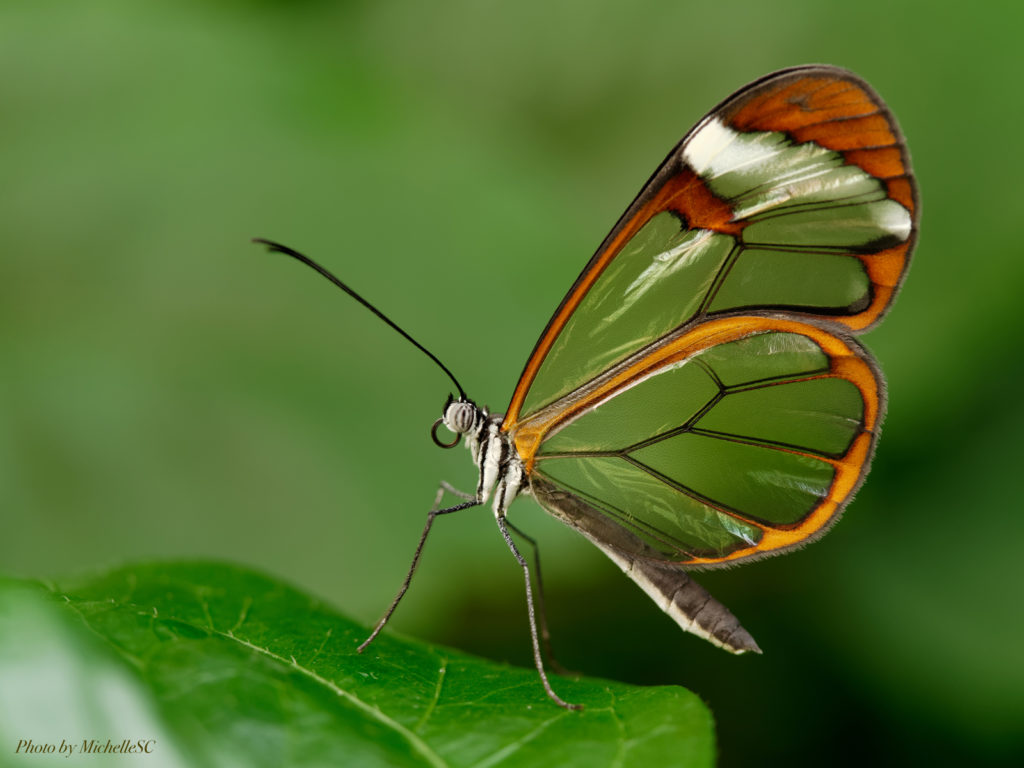
For obvious reasons, butterflies and moths are often granted the title of “most beautiful” insects, and while there will definitely be a Gogimogi list of the most amazing butterflies and moths coming soon, for now, we had to take the time to acknowledge the otherworldliness of the Greta Oto, also known as the Glasswinged Butterfly. These “mariposas de cristal” or “crystal butterflies” are native to Central and South America but they can migrate long distances and have even been spotted as far north as Texas. Their wingspan ranges between 2.2 and 2.4 inches and their wings appear transparent thanks to tiny bumps that break the light and stop it from reflecting. The edges of the wings are opaque, which somehow adds even more magic to this already alluring creature.
The Rosy Maple Moth
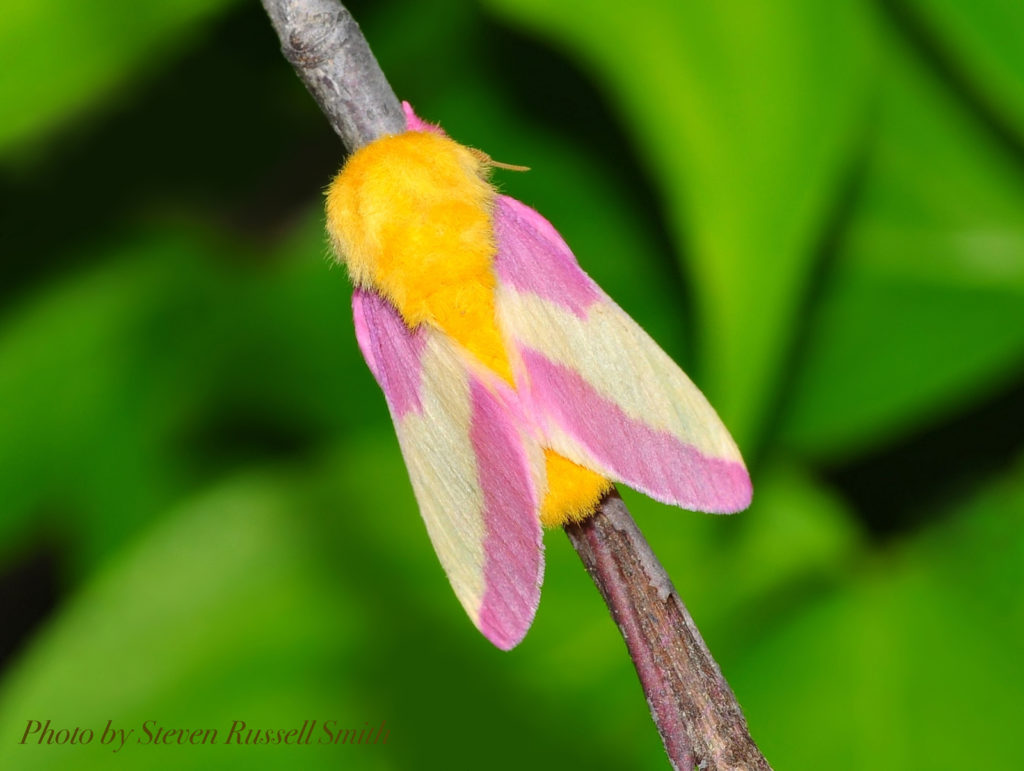
Well if we’re going to have a butterfly on the list, we might as well include a moth too. The Dryocampa Rubicunda also known as the rosy maple moth, is a fluffy moth native to North America. Their colors range between bright yellow and pink to beige or all white. The males and females look different from each other. Males are smaller with narrower wings and a wingspan of 1.25 to 1.75 inches. Females have rounded back wings and a wingspan of up to 2 inches. The males also have antennae that resemble feathers. They can live anywhere between 2 to 9 months depending on the season (they will postpone development until after winter). As you may have guessed, as caterpillars they feed on maples, but, as adults they don’t eat!
The Beautiful Demoiselle
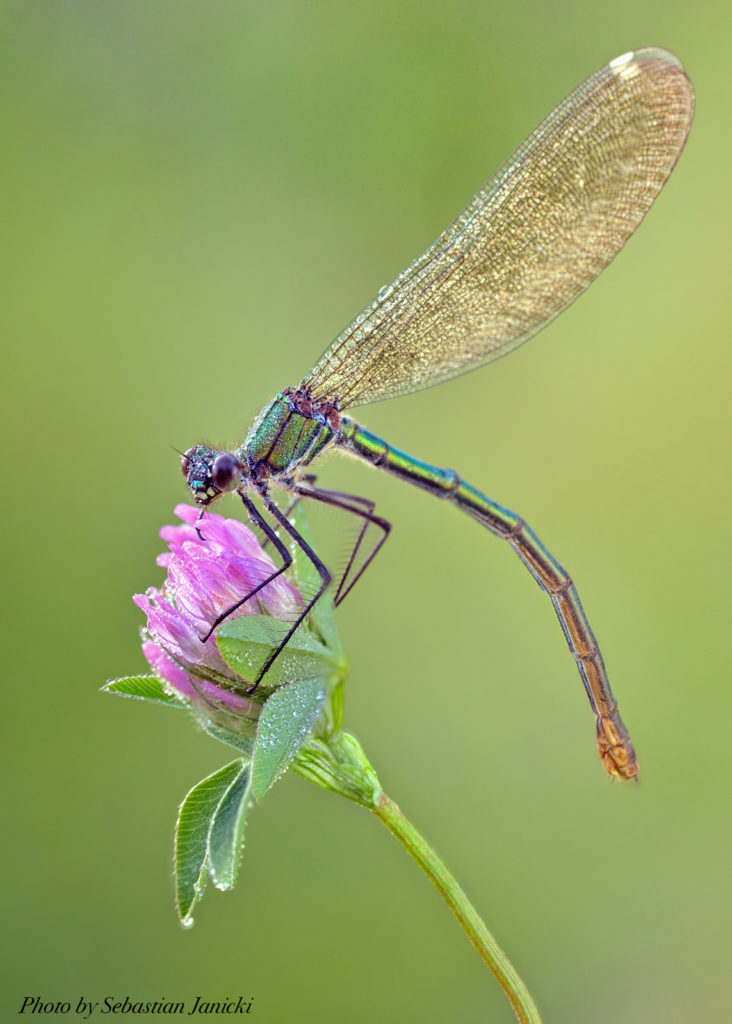
The Beautiful Demoiselle
Damselflies and dragonflies belong to an order of beautiful and carnivorous insects called Odonata (the toothed ones). You can tell the difference between a dragonfly and a damselfly by looking at four characteristics: The size of the eyes (dragonflies have large eyes that pretty much cover their whole head while damselflies have smaller eyes with a gap between them); the shape of their bodies (dragonflies have heftier bodies while damselflies are more delicate); the shape of the wings (dragonflies have hind wings that are larger than their front wings while damselfies have the same size wings that narrow down as they connect to their body; and the position of the wings when they are at rest (dragonflies keep their wings perpendicular to their bodies when resting while damselflies lift them above their bodies like butterflies).

Now that you know a little more about the difference between these two extraordinary creatures, let’s talk about the Beautiful Demoiselle, a gorgeous damselfly that lives in Europe and mostly near water streams. As an adult, this stunning creature measures about 1.77 inches. The males are a metallic blue-green while the females are an iridescent brownish-green. Their flight resembles that of a butterfly, fluttering and light.
The Italian Striped-Bug
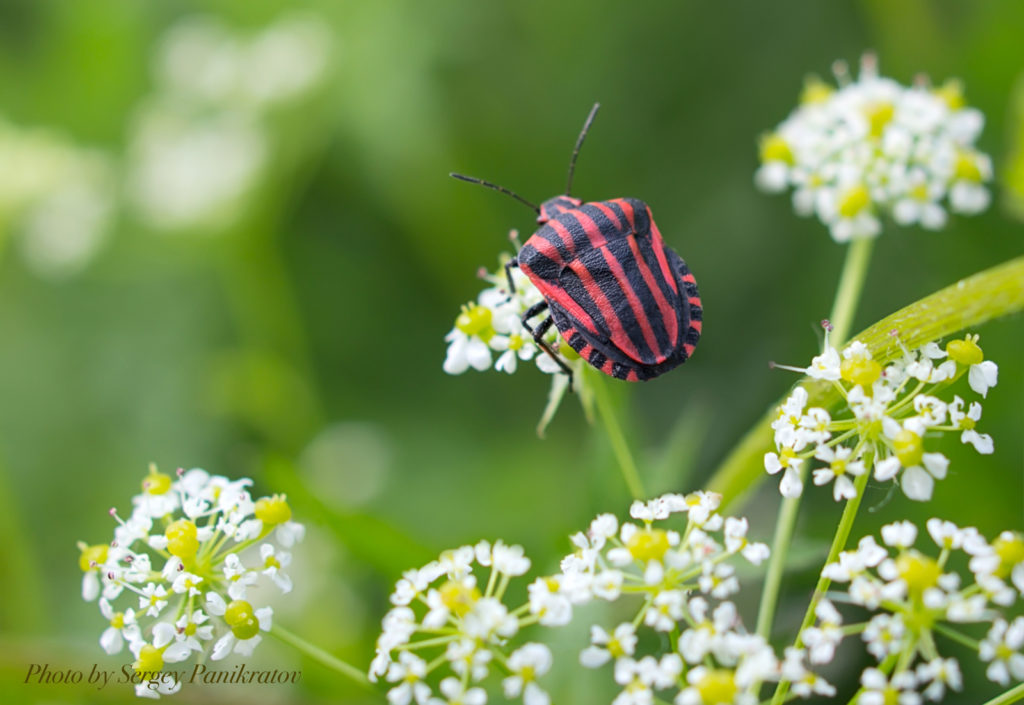
The striking red and black stripes on the Italian Striped-Bug make this insect the most stylish on our list. Native to Europe, the Italian Striped-bug, also known as the Minstrel Bug, can be found as far south as North Africa. Their length ranges anywhere between 0.31 and 0.47 inches and their bright color warn predators that they are not the tastiest prey. But they sure are chic.
The Pink Grasshopper

Little is known about the rare pink grasshopper except that it is likely a morph of the common meadow grasshopper native to Europe and parts of Asia. Its coloring is the result of something called erythrism, a genetic-mutation caused by a recessive gene similar to what affects albino animals. Albinism is caused by a lack or absence of pigments in the hair, eyes and skin whereas erythrism is caused by a reddish discoloration in an animal’s fur, plumage or skin.
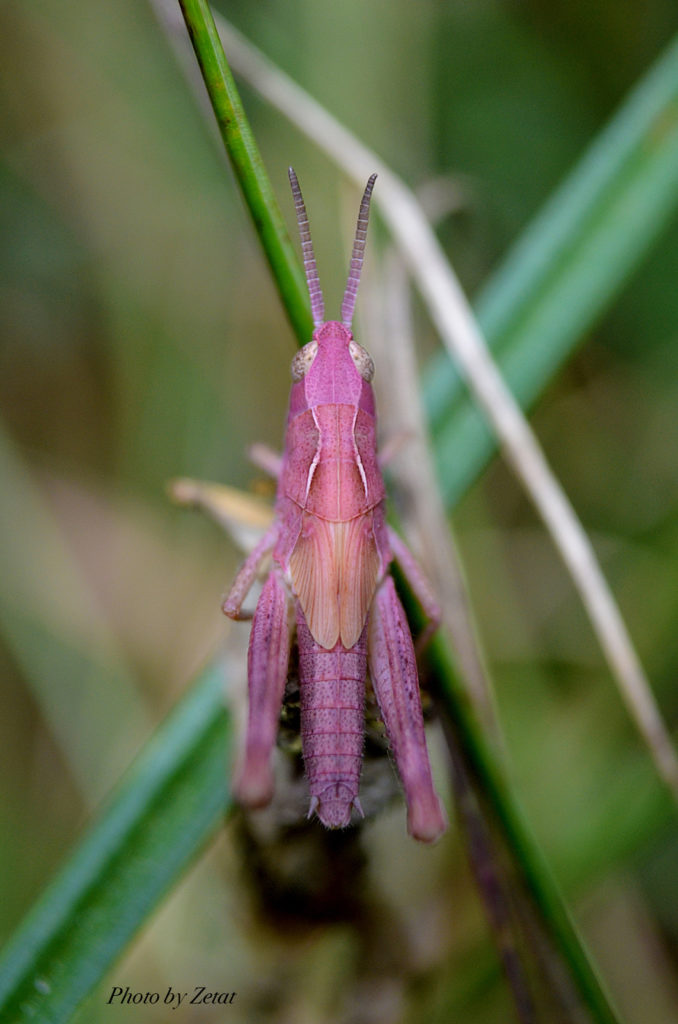
The pink grasshoppers sited to date have been mostly nymphs as their bright coloring prevents them from proper camouflage in the meadows and they often become prey before they reach adulthood.
The Jewel Beetle

Burprestidae is a family of beetles known as jewel beetles or metallic wood-boring beetles that have glorious iridescent colors. They are one of the largest family of beetles with some 15,000 species. The more metallic species were actually used as living jewelry during the Victorian Age. They range in size from 0.12 inches to 3.15 inches with most species sitting at around .79 inches.

They also appear to change color depending on the angle of view. Scientists believe these color changes are due to light-reflecting properties of their exoskeleton rather than their pigments. Regardless, they are one of the most arresting insects out there.
The Golden Silk Orb-Weaver Spider

This is probably one of the more scary-looking insects on our list, although you have to admit they are still more stunning than frightening. They are pretty large, especially the females which can be up to 3 inches big. They are also known as “banana spiders” due to the shape of their abdomen. They can weave huge webs and often sit right in the middle of them waiting for their prey. They’ve earned the name “Golden Silk Orb-Weaver” because their webs look golden in the sun.
The Lanternfly
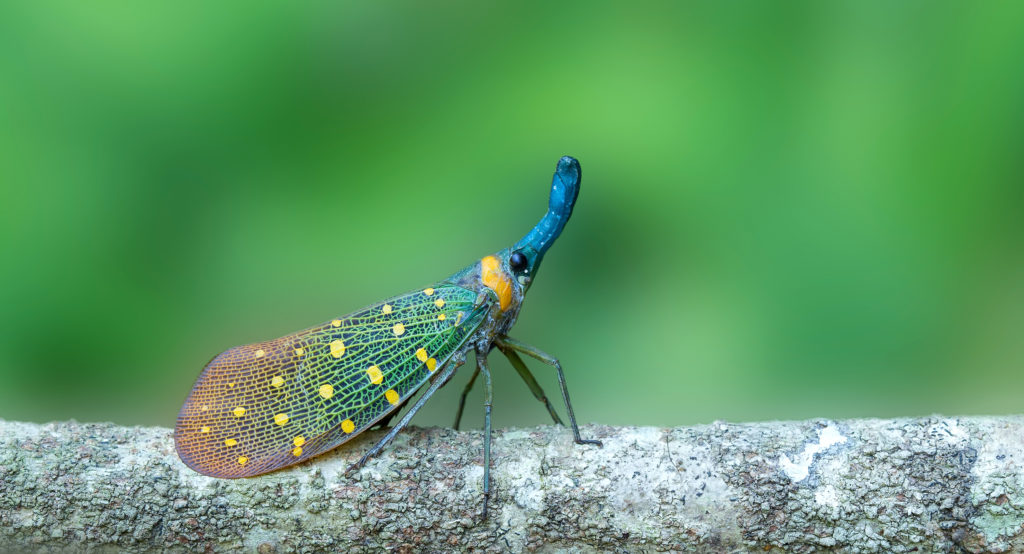
The Pyrops Candelaria, also known as the Lanternfly, looks like a magical creature straight out of a fairy tale. The surreal appearance of this planthopper comes along with intriguing myths. One of the myths is that if a lanternfly bites you, you will die unless you have sex within 24 hours. You should be ok though because lanternflies don’t bite.

The other myth is that they glow, but in actuality they have reflective patterns on their wings that look like they emit light. Despite the myths, this insect is extraordinary looking enough to merit a spot on our list.
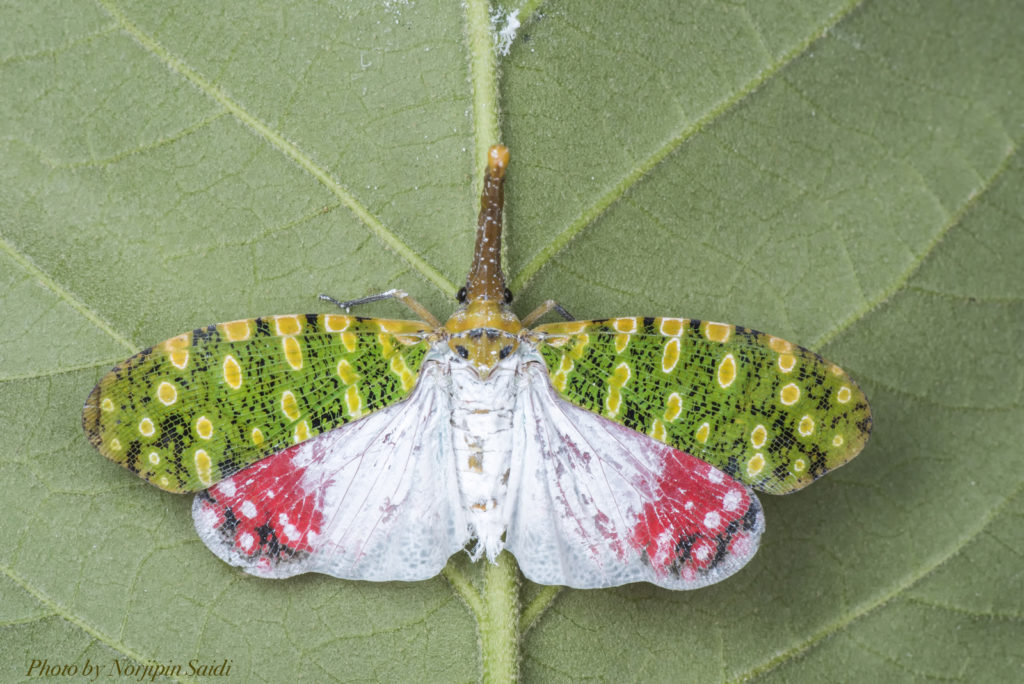
The world is rich with inspiring, colorful animals full of character and intrigue. Our goal at Gogimogi is to create designs that take an artistic and humorous approach to the study of these creatures while creating memorable characters that you want to spend time with. Check out our gallery and keep an eye out for new designs coming soon.
